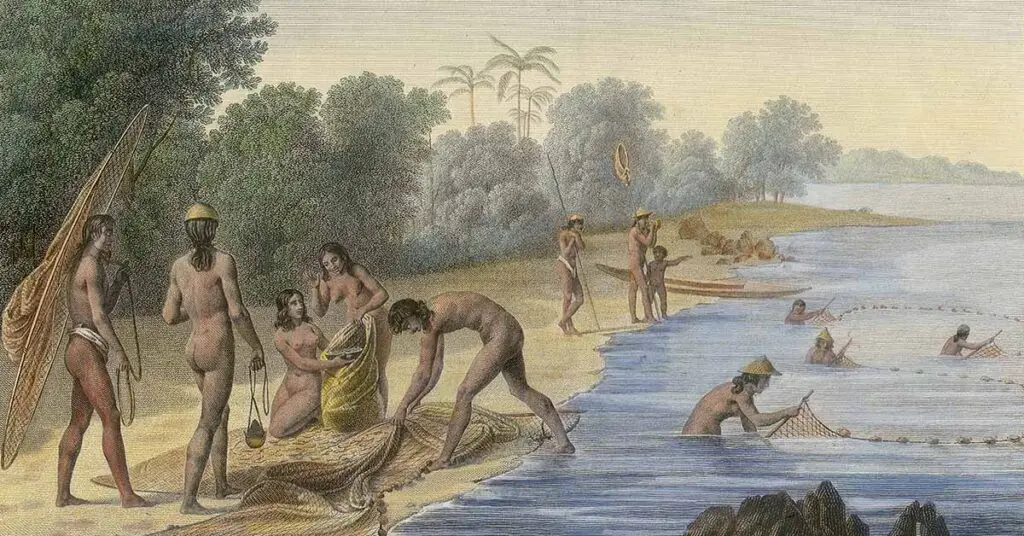Pumeska: Hunters on Land and Sea

Fishermen and hunters
Ancient CHamorus/Chamorros were avid hunters both on land and sea. They developed many methods of eguihan (fishing), ranging from etupak (line fishing), lagua’ (net fishing), fisga (long spears used), stupefying fish with puting (Barringtonia asiatica) sap, training them with a poiu or pugi (a chumming device) to lure in fish by feeding them from the depths into shallower waters then captured.
On land, CHamorus hunted the fanihi (fruit bat) and ayuyu (coconut crab). E’fanihi (to hunt for fruit bat) used a lagua’ attached to a long wooden pole to snare the creatures as they flew by searching for fruit. E’ayuyu (to hunt for coconut crabs) used ponne or tåhu (stale grated coconut meat) used as a lure for crabs. Since the Spanish introduction of the binådu (deer) and babui (pigs), CHamorus have become skilled hunters of them as well.
In 1919, CHamorus became mane’echå’ka (rat hunters) after Governor William Gilmer decreed that all CHamoru males must deliver five dead rats each month or pay a fine.
See Fish and Wildlife’s Fact Sheets about species found on Guam.
For further reading
A Journey with the Masters of Chamorro Tradition. Hagåtña: Guam Council on the Arts and Humanities Agency, 2000.
Cunningham, Lawrence J. Ancient Chamorro Society. Honolulu: Bess Press, 1992.
Russell, Scott. Tiempon I Manmofo’na: Ancient Chamorro Culture and History of the Northern Mariana Islands. Saipan: Commonwealth of the Northern Mariana Islands Division of Historic Preservation, 1998.
